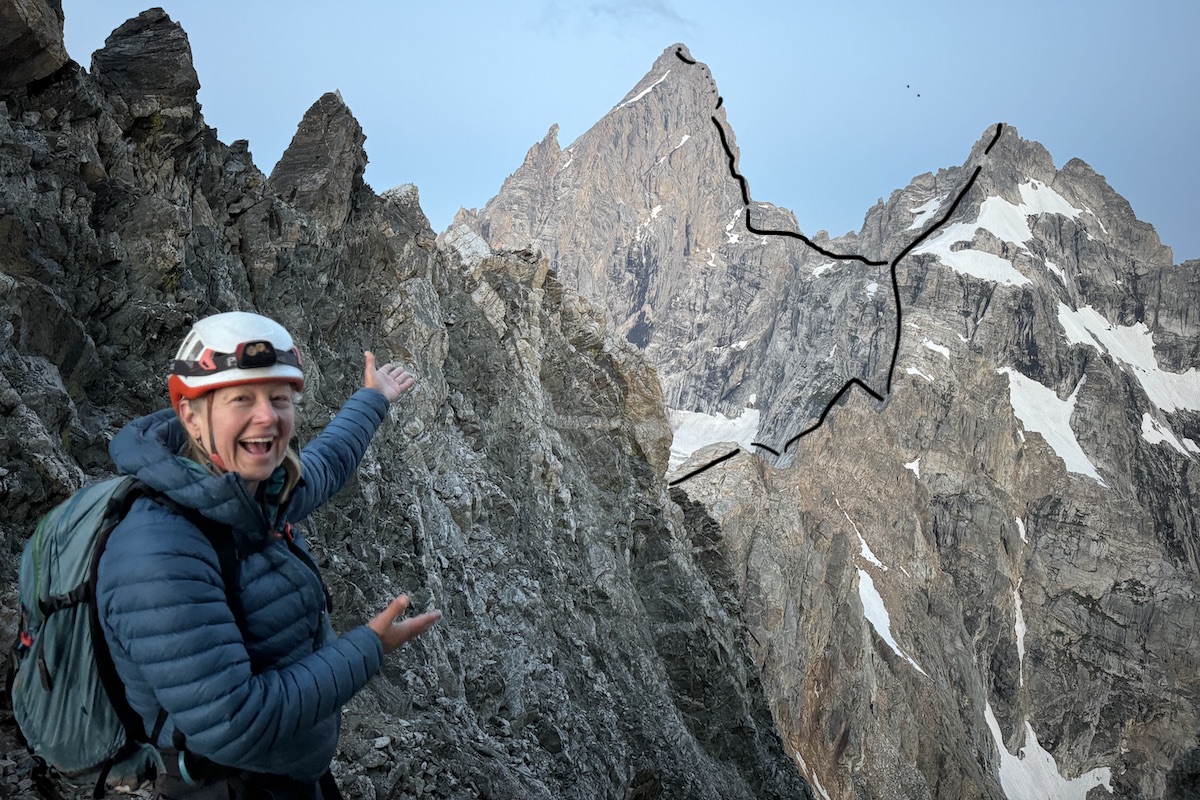The Cathedral Traverse – 24 Hours, Light and Not So Fast
As a traveling climber and skier, I’m always looking for new partners. So when I was wandering solo around Yellowstone’s Prismatic Basin and my phone rang—it was a potential partner for the Cathedral Traverse the very next day—I was intrigued. We introduced ourselves, shared our names and climbing backgrounds, and I said, “I can be back to the Tetons in 3 hours.” The Cathedral traverse is over 20 miles, over 8,000′ vertical, and has many 5th class obstacles including an 8 pitch route up the North side of the Grand Teton called the North Ridge. So, it’s a large undertaking.
We talked skill level, risk tolerance, the weather window, energy reserves, and yes—feelings. Feelings are key on any big mission. Are you “summit or plummet”? Or are you just looking to vibe and give it your best while staying safe? We passed the vibe check: neither of us needed to summit at all costs. We just wanted to go as far as we could safely and supportively.
But we had different styles. He wanted to take several days, doubting that he could move fast enough to complete in one day. He’d tried the traverse previously with a multi-day strategy and was unable to finish. I countered with something that probably sounded weird: “I don’t think I’m strong enough to do this over multiple days.” Heavy packs on technical terrain aren’t my jam. I explained that I do better with a light pack and one big push starting well before sunrise and ending well after sunset.
After some back and forth, he agreed to try it my way. Later, when we succeeded, he was stoked and glad we’d gone light and fast
The Climb Begins
We started in the dark and made good progress up Teewinot until the technical section where we wandered too far left. Some headlamps passed us on the right and we managed to get back on track. We weren’t discouraged—lots of Teton climbers are ultra-athletes. Our goal was to have fun and stay safe.
We paused to watch sunrise and beamed with joy. My partner had been here before and knew we needed to cut hard left after Teewinot. That crucial beta saved us time and energy—following the wrong social trail would’ve cost us 30 minutes and maybe our momentum.
The Grand still looked so far away. Honestly, if I had stopped to think about the distance and technical climbing still ahead, I might’ve been overwhelmed. But that’s the thing—you make the plan, and then you just keep going as long as things feel safe (no unexpected storms, no unexpected unstable snow, etc). We were traveling fairly unencumbered since we were able to refill water in three spots (Teewinot, Owen and the Grand).
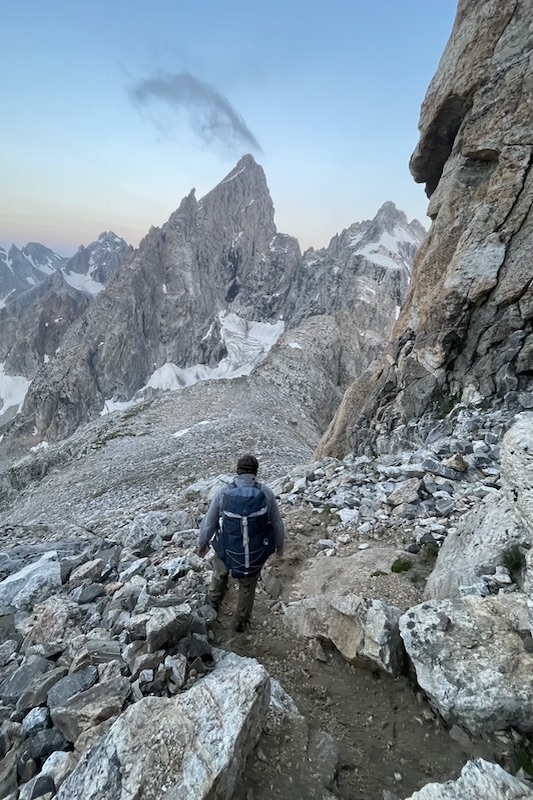 |
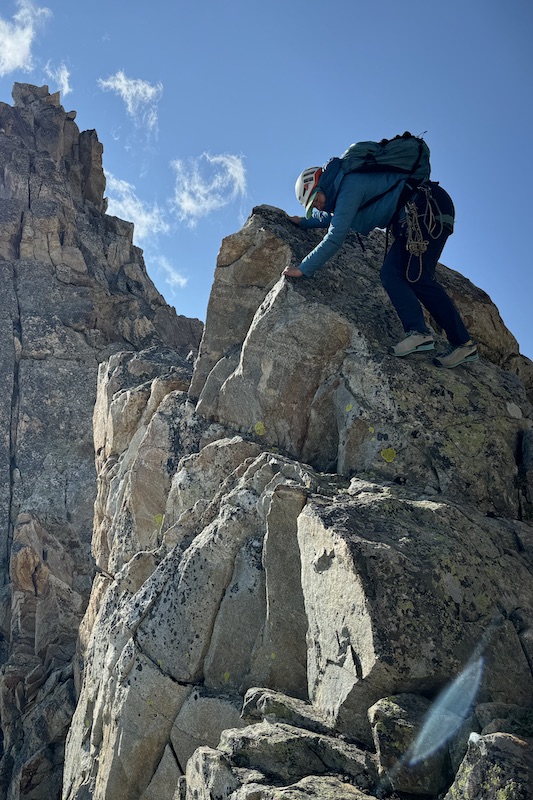 |
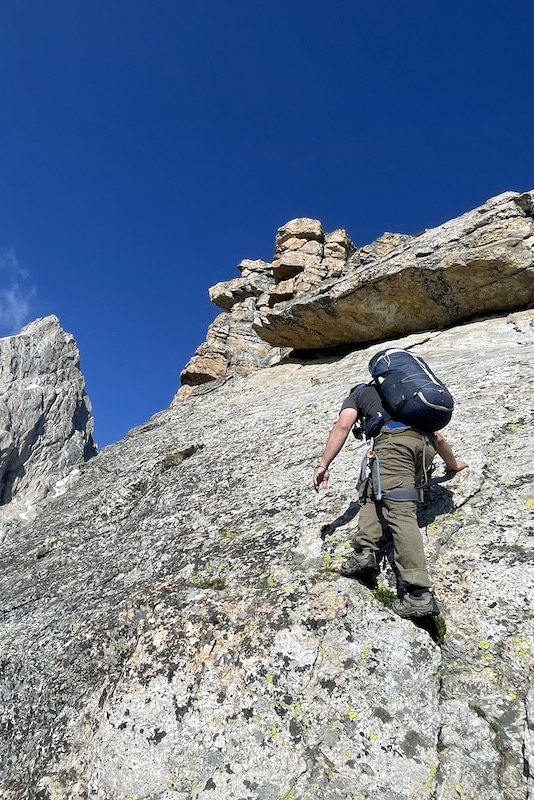 |
|---|
We covered miles of walking and mixed 4th–5th class terrain, plus a few rappels. I’m fast with rope systems; he was fast with route-finding. We made a great team. Even when he was leading, I would quickly check our direction on my map—it’s good to stay oriented and not rely fully on one person, especially when beta is fuzzy. For example, what if things go sideways? Ideally everyone in your party knows where you are, where you’re headed, and emergency exit points if needed.
We roped up for a 5.6 crack that had one smeary step that made me glad we stopped to belay it.
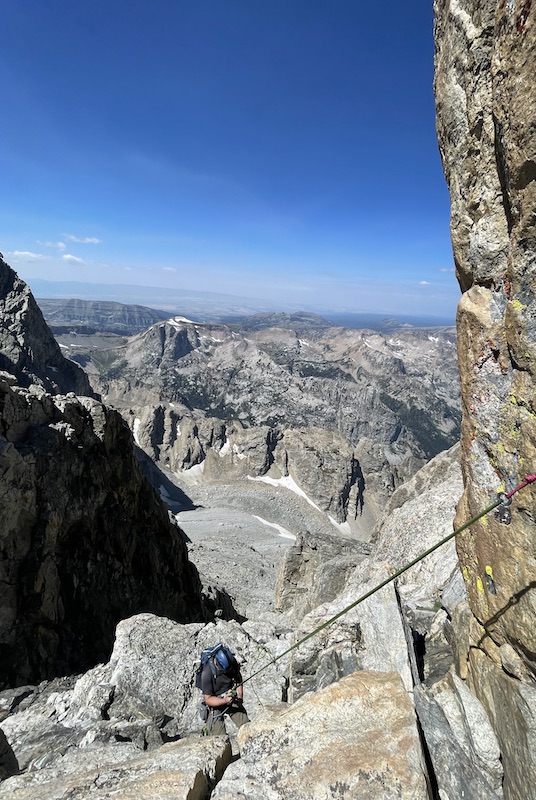 |
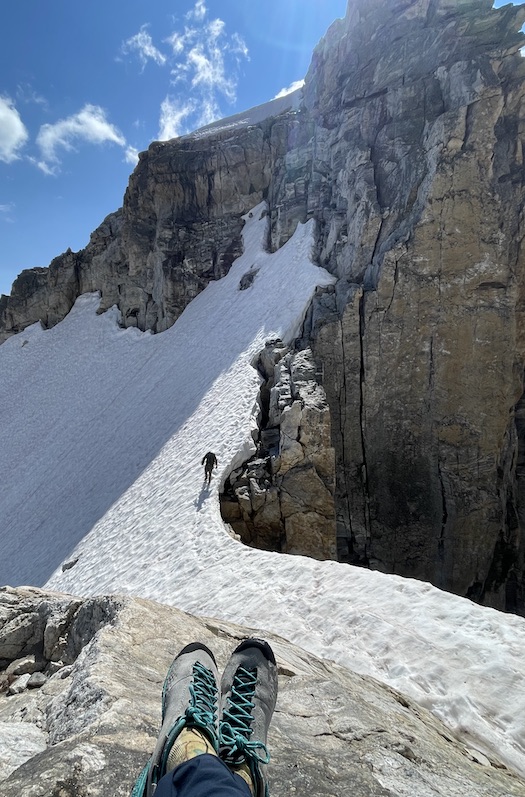 |
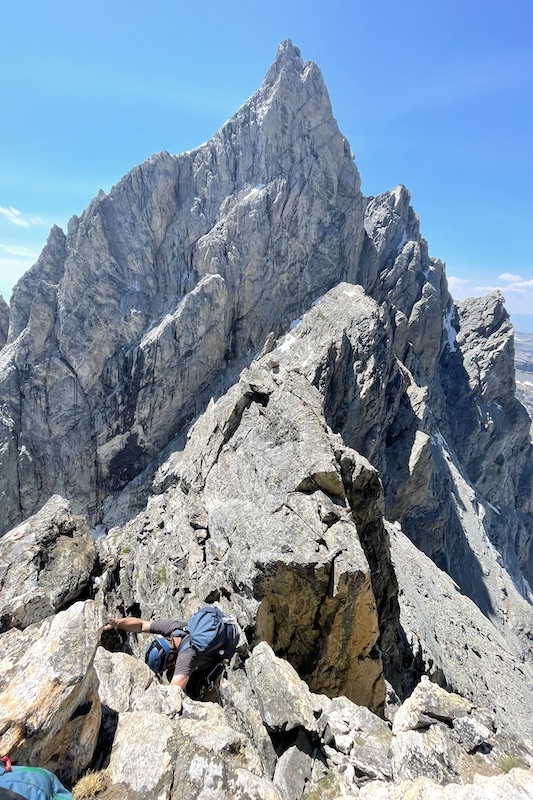 |
|---|
The Crux: North Ridge of the Grand
We struggled to find the “easy” 5th class access off the Grandstand to the North Ridge. This turned out to be the psychological crux of the day and he took the lead on the spicy ‘5.7’ pitch that seemed like R-rated 5.9 moves. I think next time we’d send one person down off a set of fixed anchors, hard left, to see if they could find the easy 5th class.
Having lost a lot of time, we had less than 3 hours of light to complete 7 pitches. We checked in with each other. Were we mentally sharp? Was the weather holding? Were we both still strong? The answer was yes, so I took the lead.
Suddenly, it was go time. I flaked the rope, built a quick anchor, tied in, and set off while he gathered his belongings, clipped in, and got me on belay. The initial North Ridge had twists and unexpected traverses—I got off route a few times. Then we got to the spot on the North Ridge where I’d prep’d the week before. We started to fly with quick transitions. It was the most technical part of the day, and I had it dialed from the week before. (See the related post: North Ridge of the Grand, from the top!)
I was thrilled to find better protection in one section I’d found scary last week. We were racing the light, and he was following the final pitch in the last glow of the day. The summit was sweet, and the teamwork made it golden.
We celebrated quietly, refueled, and made our way across familiar terrain, now in the dark. It was simple even though we most certainly were exhausted. Neither of us will forget that day—how we completed a “24-hour” traverse, in 28.5 hours including a planned shiver bivy to rest a little before walking down the final 5,000′ or so to where it all began a day earlier.
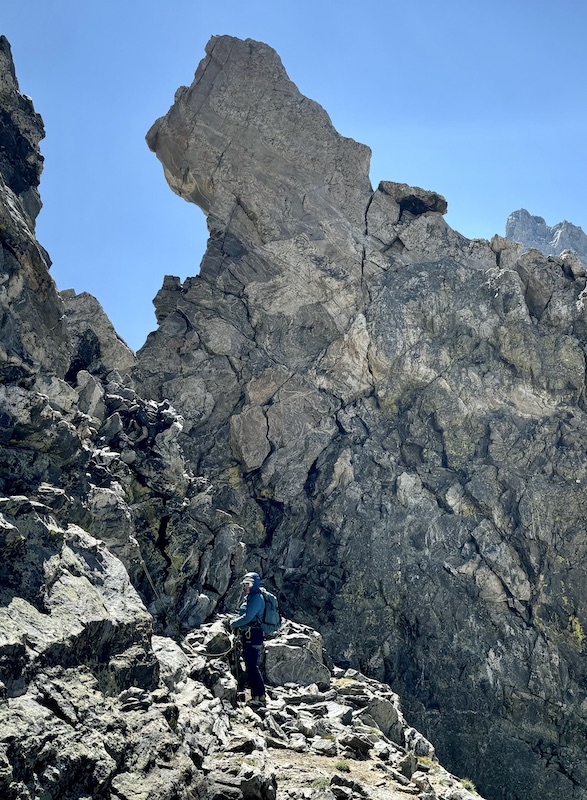 |
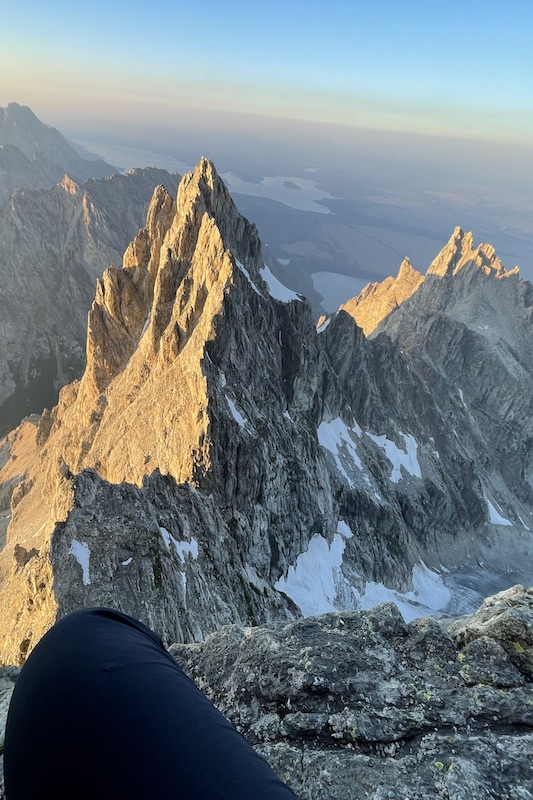 |
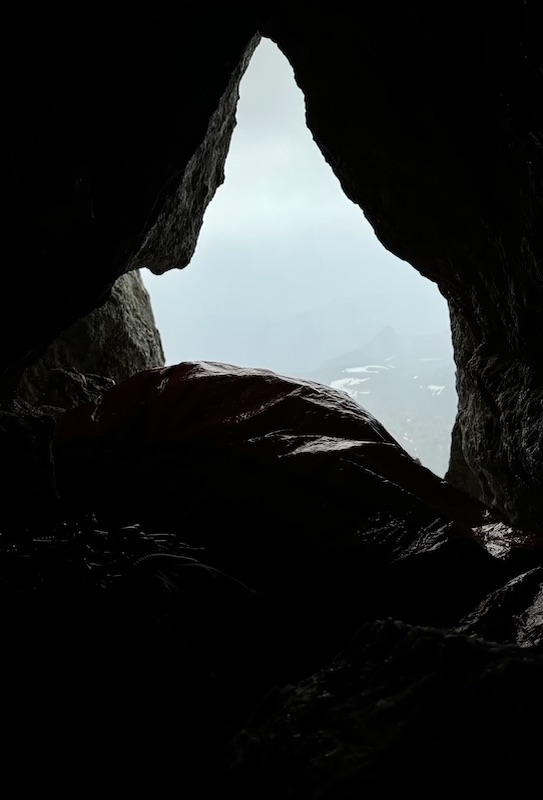 |
|---|
